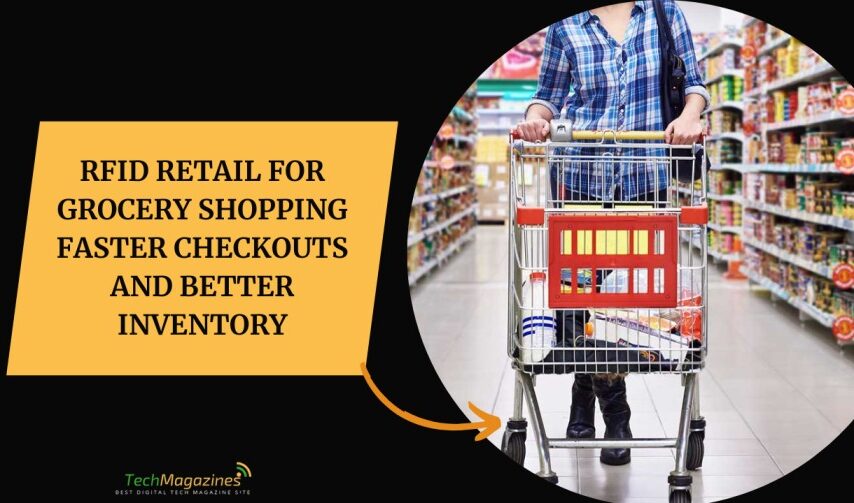The Evolution of Shopping: How RFID is Changing Retail
RFID retail is transforming the way grocery stores operate, making shopping more efficient and reducing checkout times. Imagine walking into a store, picking up your items, and walking out without having to scan each product. That’s not a futuristic concept—it’s already happening with RFID technology.
This innovation is making waves by helping businesses track inventory in real-time and improving customer satisfaction. But how does it work, and what does it mean for retailers and consumers?
What is RFID and How Does It Work in Retail?
RFID (Radio Frequency Identification) uses small, embedded tags that contain unique product information. Unlike barcodes, these tags don’t need to be scanned individually. Instead, RFID readers can automatically detect multiple products at once, making inventory management seamless and reducing human errors.
Retailers are leveraging RFID to streamline their supply chain, prevent stockouts, and speed up checkout lines. In grocery stores, for example, every product can be tagged, allowing a scanner to process a cart full of items in seconds.
RFID retail is already making a huge impact on the industry, leading to increased profitability and better customer experiences.
Real-Life Example: How RFID is Revolutionizing Grocery Stores
A major supermarket chain recently implemented RFID across all its stores. The result? Inventory accuracy improved from 60% to 98%, reducing out-of-stock situations. Customers no longer had to wait in long lines, as RFID-enabled checkouts processed transactions in a fraction of the time.
One shopper described their experience: “I walked through the self-checkout lane, and my items were automatically scanned and totaled. It felt like magic!” This seamless process not only saves time but also enhances the overall shopping experience.
Faster Checkouts: Say Goodbye to Long Lines
One of the biggest frustrations for grocery shoppers is waiting in checkout lines. Traditional barcode scanners require items to be manually scanned one by one. With RFID, an entire cart can be processed instantly.
Retailers implementing this technology have reported a 40% decrease in checkout times, allowing them to serve more customers efficiently. This means less time spent waiting and more time doing what matters most.
Inventory Management: No More Guesswork
Keeping track of stock in a grocery store is a complex challenge. Expired products, misplaced items, and inaccurate stock counts lead to financial losses. RFID enables retailers to monitor inventory in real-time.
By placing RFID sensors throughout the store, employees can instantly locate any product and restock shelves before items run out. This technology also helps track expiration dates, ensuring customers get the freshest products possible.
Theft Prevention: A New Layer of Security
Retail shrinkage is a billion-dollar problem for grocery stores. Shoplifting, employee theft, and administrative errors contribute to significant revenue loss. RFID tags add an extra layer of security by triggering alarms when unpaid items leave the store.
Some stores have integrated RFID with AI-powered cameras, automatically flagging suspicious activity and reducing theft rates by up to 70%.
Sustainability and Waste Reduction
Food waste is a pressing issue in the grocery industry. With RFID, retailers can efficiently track perishable goods and ensure they are sold before expiration. This reduces waste and supports sustainability efforts.
A major grocery chain utilizing RFID saw a 20% reduction in food waste within the first year of implementation. By knowing exactly when items need to be sold or donated, stores can operate more responsibly and profitably.
The Future of RFID in Retail
The adoption of RFID is just beginning. As costs decrease and technology advances, expect to see more retailers implementing RFID-driven shopping experiences. From smart refrigerators that remind customers to restock items to automated restocking systems, the possibilities are endless.
In the coming years, RFID could eliminate traditional checkout lines altogether. Retailers will use smart carts that automatically process payments as customers exit the store. This shift will further enhance convenience and revolutionize the grocery shopping experience.
Final Thoughts
RFID retail is no longer a futuristic idea—it’s a present-day reality that is improving efficiency, reducing waste, and creating better shopping experiences. Grocery stores are at the forefront of this transformation, leveraging RFID to speed up checkouts, optimize inventory, and prevent theft.
With continuous advancements, RFID will soon become the standard in retail, making shopping more seamless and efficient for both businesses and consumers. The next time you visit a grocery store, look around—you might already be experiencing the power of RFID without even realizing it.








